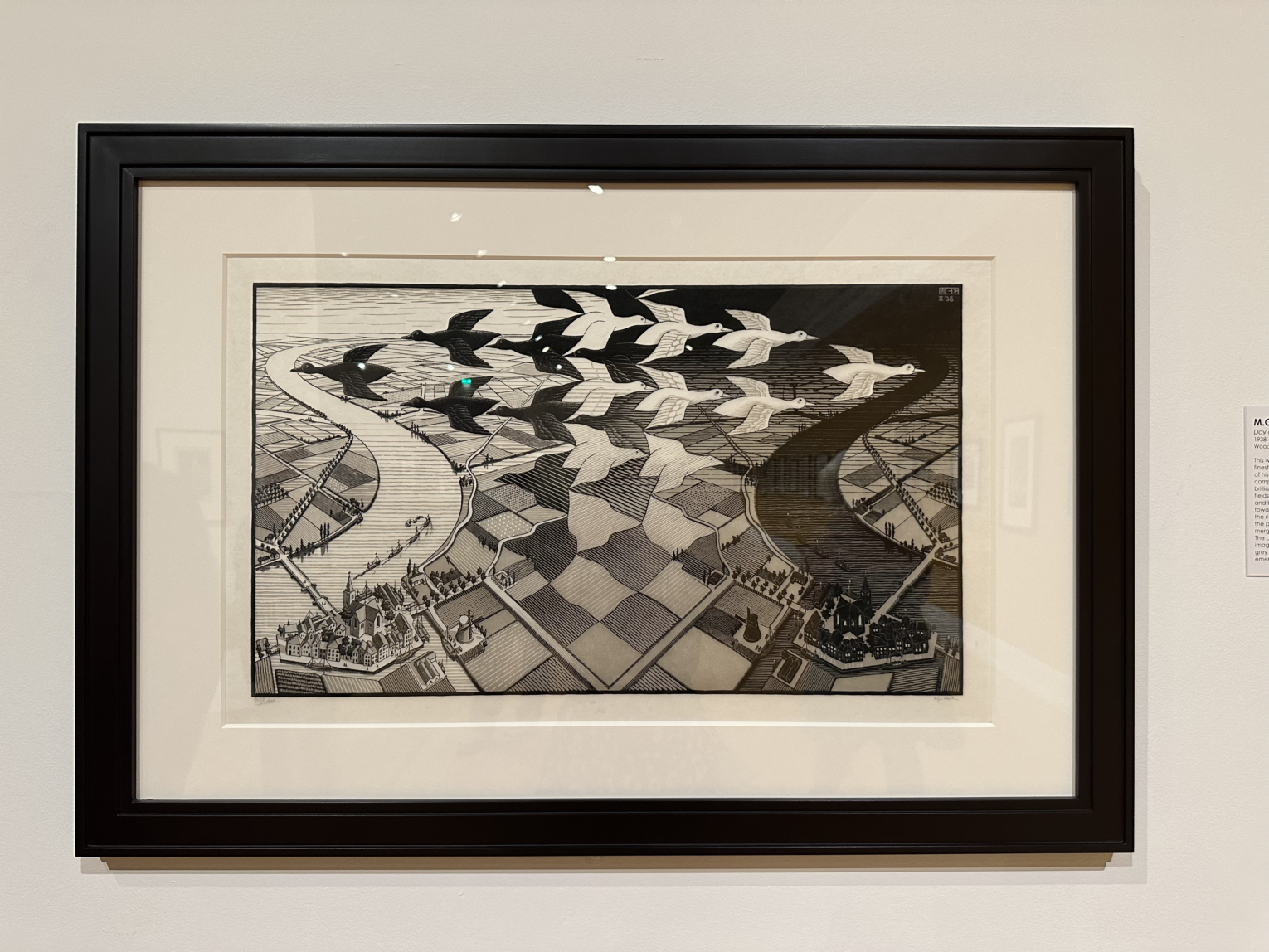
In my line of work, where understanding human psychology and capturing attention is key, the power of art has always intrigued me. So, when I had the opportunity to attend an exclusive media walk-through of the “M.C. Escher: Infinite Variations” exhibit at the Vero Beach Art Museum, I knew it was an experience I couldn’t pass up. The exhibit will run til December 30, 2023. The walk-through on Friday, October 20, at 2:00 pm, offered a sneak peek into this fascinating realm.
As I walked into the Vero Beach Art Museum, the atmosphere was electric with a sense of anticipation and excitement. The museum itself was impeccably arranged to showcase Escher’s work, providing an inviting space for deep contemplation and discussion. The layout was intuitive, guiding visitors through a journey of visual and intellectual discovery.
Our guide for this enlightening afternoon was Dr. Salvatore Iaquinta, a lifelong Escher enthusiast and a distinguished member of the Board of Directors for the M.C. Escher Foundation. With over two decades of studying Escher’s work, Dr. Iaquinta’s insights were illuminating, adding layers of depth to each piece we examined.
The exhibit itself is a marvel of curation and scholarship, being the largest private traveling collection of Escher’s work in the world. It features a comprehensive range of his art forms, from woodcuts and lithographs to drawings and mezzotints. Dr. Iaquinta took us on a journey through Escher’s evolving styles and themes, Moorish architectural influences, and even alchemical symbols that pervade his work.
Escher’s creative process was a labor of love that evolved over time. Early in his career, he was inspired by the natural world, sketching landscapes, insects, and plants. His travels through Italy and Spain had a profound impact on his work, particularly his exposure to the intricate designs and mathematical structures in the architecture of the Alhambra and the Mezquita of Cordoba. These experiences triggered a shift in his focus from observational art to a more analytical and imaginative approach.
Escher’s father originally wanted him to be an architect, and he wasn’t particularly good at math. However, during his college years, he decided to pursue art, a field where he started slowly and without a clear direction. It wasn’t until he moved to Italy after finishing school that he began to find his artistic voice. In the mid-1930s, a return trip to his homeland and exposure to geometric timings inspired him to change directions. He spent a considerable amount of time honing his technique, which was initially criticized by a friend. This critique led him to seek expert advice to improve his lithographs.
The artist would often lock himself away for days, deeply engrossed in conceptualizing his next piece. Once he had a clear vision, he would execute it with remarkable speed and precision. His choice of materials was equally meticulous; he often used pear and maple wood for his woodcuts. Escher was so passionate about his work that he kept detailed logs of who purchased each piece, and he even printed most of his work by hand, avoiding the use of a press to maintain the integrity of each print.
What resonated with me the most was Escher’s meticulous approach to his art. The artist would seclude himself for days, brainstorming and conceptualizing, only to execute his ideas with remarkable speed and precision once he had a clear vision. This level of dedication and attention to detail is something I find incredibly relevant in my own profession, where capturing the nuances can make all the difference.
Dr. Iaquinta also provided a comprehensive look into Escher’s personal life, discussing his formative years in Italy, his marriage to journalist Jetta Umiker, and his later struggles with cancer. This biographical context added a layer of emotional depth to the experience, making each piece even more impactful.
Beyond the individual pieces, the exhibit also touched on Escher’s broader influence on art, mathematics, and even popular culture. His work has inspired everyone from mathematicians to graphic designers, and his techniques have been studied and emulated by artists around the world.
If you’re in the business of capturing attention, this exhibit offers a compelling case study in the transformative power of passion and meticulous attention to detail. Don’t miss the chance to experience it for yourself between now and December 30, 2023. It’s not just an art exhibit; it’s a deep dive into the complexities of human imagination and the endless possibilities it holds.









Private Collection, Image copyright of the M.C. Escher Co.

